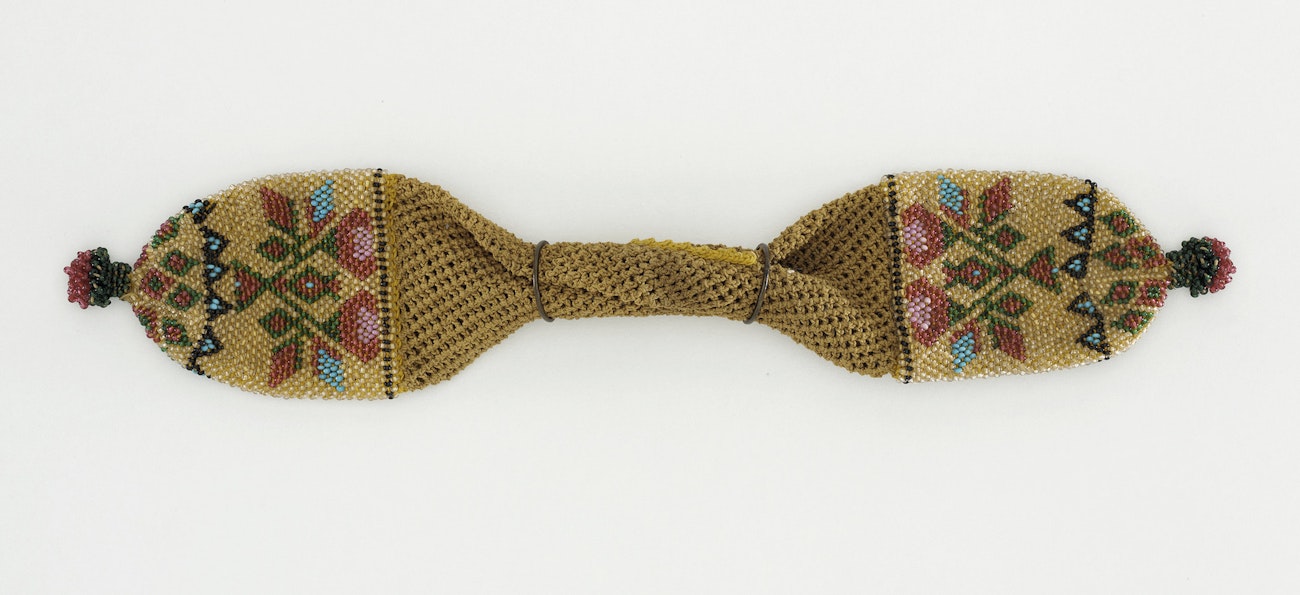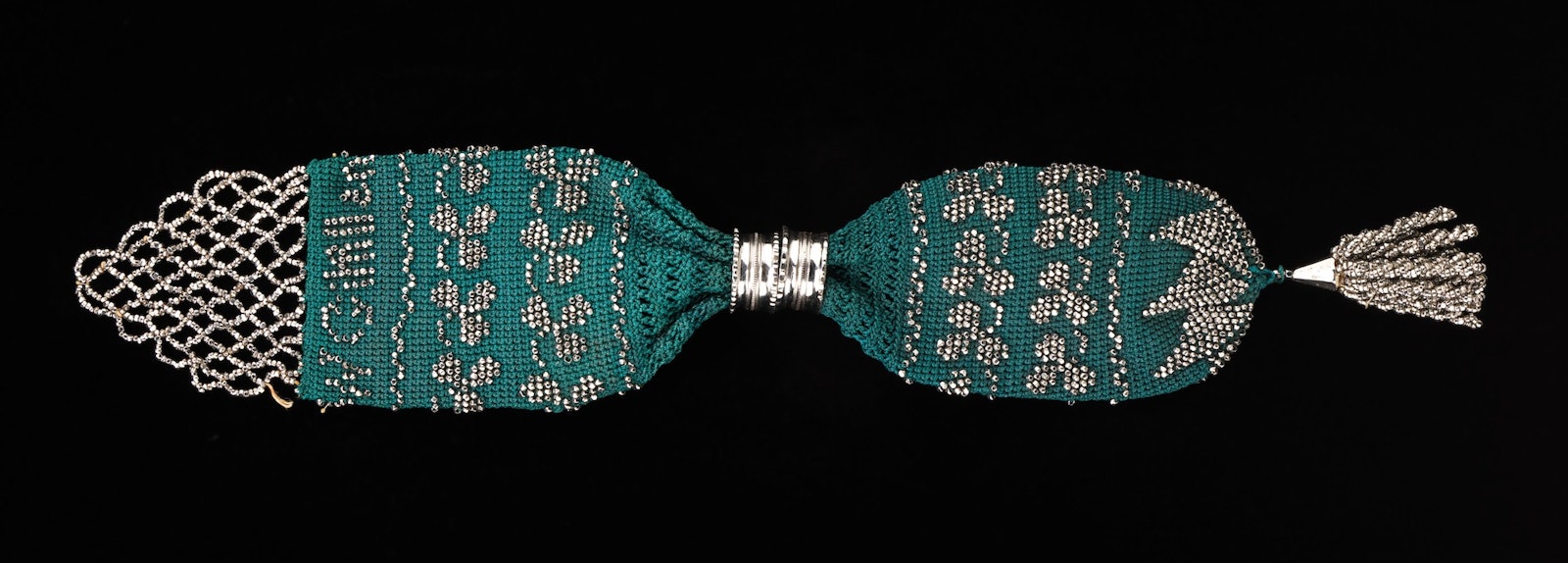The Miser’s purse originated late in the eighteenth century and was variously called misers, hookers, almoners (or aumonières), and wallets, or long, stocking, ring, and string purses. The shape of the miser’s purse originated from the medieval practice of carrying coins in the toe of a stocking. A large version—as much as a couple of feet long and perhaps used largely by men during the eighteenth century—gradually became smaller and more refined.
The miser’s purse grew in popularity on the continent and in England during the nineteenth century. During the second half of the century, it became one of the most common purses that Victorians carried. Used by both women and men, the typical nineteenth-century miser’s purse was a long tube made of “purse” or “netting” silk, often crocheted, netted, or knitted, with or without beads. Narrow in the middle and closed at both ends, miser’s purses ranged in the course of their history from 4 to 36 inches (10.2 to 91.4 cm) long. During the Victorian era, many miser’s purses were from 8 to 10 inches (20.3 to 25.4 cm) long. The “toes” of the purse, which might be of the same or different shapes, often were tasseled or fringed.
How it works
A short slit in the narrow midsection of fabric (in beaded purses, this section was left unbeaded) let the carrier drop coins or other small objects into either end of the tube. It could be closed off by moving two rings, or sliders, of different materials including steel, brass, silver, gold, or mother-of-pearl toward the ends, gathering the fabric snugly around the contents.

Man’s miser’s purse. United States or England. Mid-nineteenth century. Cut steel beads. 11¾ inches (29.8 cm) long. Collection of the Los Angeles County Museum of Art, Los Angeles, California; gift of Mrs. Lottie Pottle Clark Bequest. (34.2.23). Photograph courtesy of the Los Angeles County Museum of Art; www.lacma.org.
When miser’s purses were designed with one rounded and one square end, the different shapes had a purpose: In the frequently poor lighting (perhaps as one paid a coachman or shopkeeper at night or in a dimly lighted room), the correct coins could be withdrawn by feel. The square end with fringe might contain silver coins and a contrasting diamond, round, gathered, or tasseled end, gold coins. Gilt thread often stitched beaded or embroidered patterns on the end intended for gold coins and silver thread on the end intended for sterling.
The miser’s popularity was due in part to the speed with which it could be constructed. Directions for working the purses in knitting, netting, and crochet appeared in popular magazines throughout the late Victorian era, although less often after 1870. From its first issue in July 1830 until its demise in 1879, Godey’s Lady’s Book contained patterns and directions for making purses of all sorts. An openwork crochet miser’s purse was featured in the September 1862 issue.
GWEN BLAKLEY KINSLER’S original version of this article appeared in the November/December 1996 issue of PieceWork. Gwen’s complete article and step-by-step instructions for making a gorgeous bead crochet miser’s purse are in the March/April 2017 issue of PieceWork.

